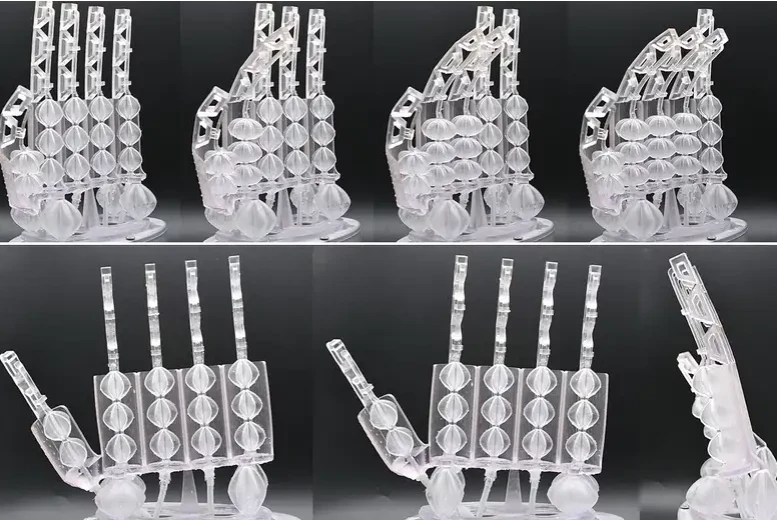Flexible robot hand lifts 1000 times its own weight with precise grip
Researchers assert that a robot that can perceive its own body has self-awareness / Chemically recycling wood to make steel-like material
Researchers have found that tiny actuators, which turn energy and signals into movement, that work like artificial muscles could lift up to 1000 times their own weight. This could one day lead to robots with grips like humans.
At the Italian Institute of Technology, Corrado De Pascali and his colleagues have created actuator-based, 3D-printed artificial muscles that use inflation to transform energy into movement. According to De Pascali, "We began with the conventional artificial muscle and developed a new class of artificial muscles made of a single monolithic component."
The flexible resin used to 3D print the actuator membranes, also known as GeometRy-based Actuators that Contract and Elongate (GRACE), allows them to stretch and contract like human muscles. The researchers' mathematical model was used to design the membrane.

GRACE actuator membranes are 3D printed from a resin that enables them to stretch and contract like a human muscle Italian Institute of Technology.
The GRACE actuators' membrane contains foldable and unfoldable pleats, making them distinct from earlier generations of artificial muscles and giving the latter more strength and flexibility.
Some actuators may be able to lift relatively heavy objects, depending on the material used to make the actuator and the thickness of the material. One 8-gram actuator successfully lifted 8 kilograms when put to the test.
Additionally, the actuators can be combined to resemble real muscles and body parts. 18 actuators of various sizes were connected by the researchers to create a robotic hand with a wrist. The hand could rotate at the wrist and bend its fingers by applying pressure to the various actuator membranes.
According to Jonathan Aitken at the University of Sheffield in the UK, "The GRACE's design is interesting and novel, providing simple antagonistic operation by design."
The choice of flexible resin for the actuator, which provides a greater range of movement than the stiffer resins used up until now, is one of the most innovative components, according to Aitken. However, according to Aitken, this flexible resin could still be improved. "The range of capabilities of devices printed using them will increase the more novel resins that can be developed with excellent tensile properties," he claims.
Journal reference: Science Robotics, DOI: 10.1126/scirobotics.abn4155
End of content
Không có tin nào tiếp theo
